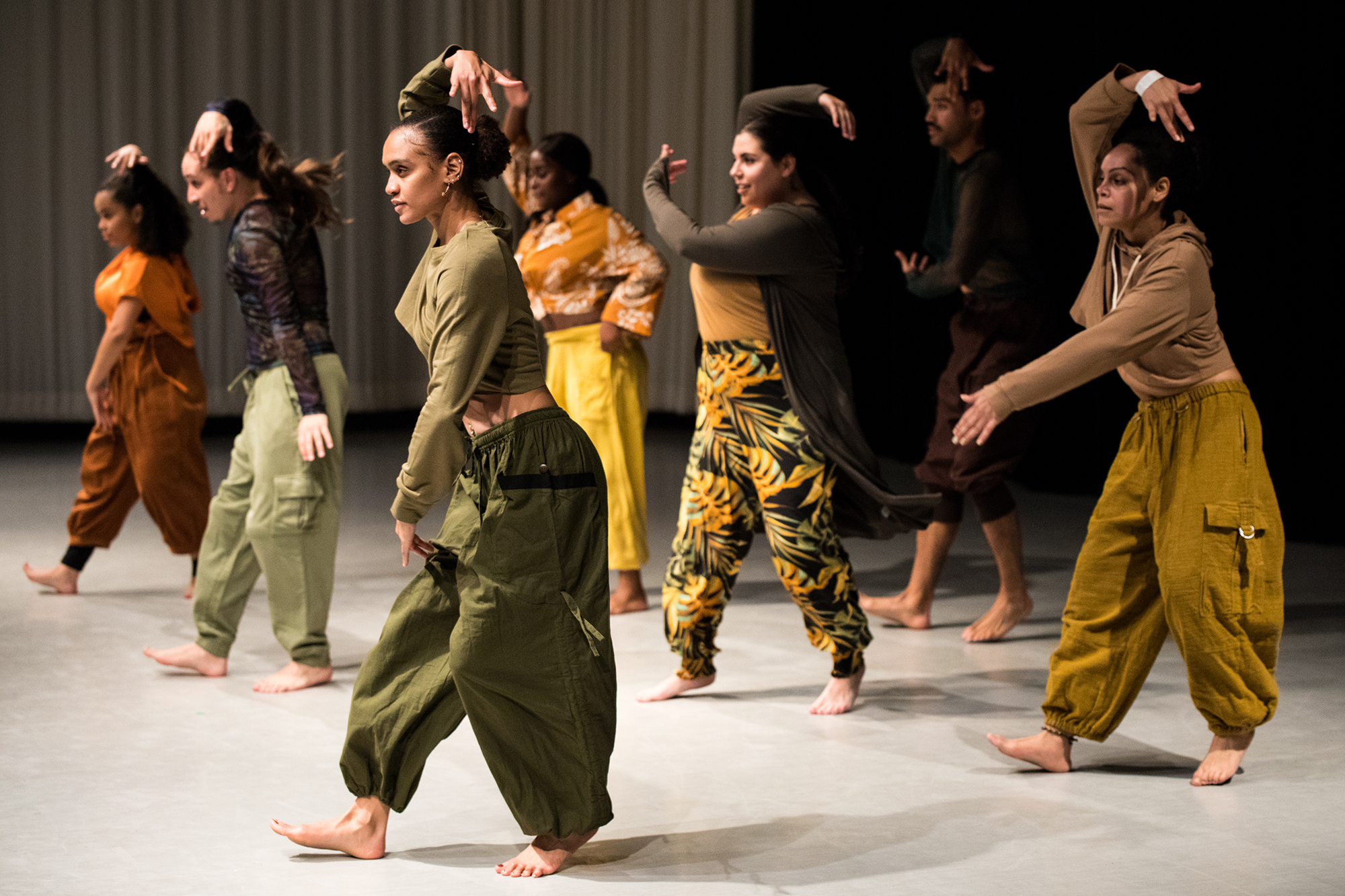CONTACT
-
Department of Biological Sciences
718-960-8235
Davis Hall, Room 217Office Hours
Monday - Friday, 9:00am-5:00pm
Faculty Maryam Bamshad
 E-mail address: maryam.bamshad-alavi@lehman.cuny.edu
E-mail address: maryam.bamshad-alavi@lehman.cuny.edu
Phone Number: 718-960-8646
Office: Davis Hall 134 (Lab: Davis Hall 221A)
Rank: Professor
- B.S., M.S., Ph.D., Univ. of Mass.
The human stress response, which is vital for survival, can impact behavior and cognition. Depending on the stressor and its response, the effect on the body and the brain could be either positive (engagement and approach) or negative (disengagement and withdrawal). My research focuses on understanding how stress influences the development of social bonds and approach. My lab also investigates how stress affects cognition that is relevant to decision-making and problem-solving. Previously, using prairie voles as a mammalian model of human behavior, we showed that the father’s presence in early development is a social factor that affects neuronal connections in the brain and stress-induced social approach in adult males. Currently, we are studying human subjects to better understand the effect of stress on mental effort when solving problems. Our aim is to determine whether training can alter neuronal connections in the brain to enhance attentiveness and to change the mind’s cost-benefit analysis of mental effort exertion.
- Lang, D. L. Y., Bamshad, M., Dorcely, R. (2019) Pattern of Fos activation in the ventral tegmental area (VTA) of male prairie vole’s (Microtus ochrogaster) in response to infant-related stimuli. Brain Res. 1714: 119-125.
- Al-Naimi, O. A. S., Delvalle, J. R., Carryl, S. S., Rodriguez, N. A., Aliou, F., Cambi, M., Bamshad, M. (2018) Socio-ecological disruptions at critical periods during development alter stress responses and hippocampal dendritic morphology of Prairie voles: Implications for social monogamy. Front. Ecol. Evol. (Published at: https://doi.org/10.3389/fevo.2018.00084).
- Delevan, C. J., N. A. Rodriguez, K. M. Legzim, F. Alioua, J. T. Parker, and M. Bamshad (2017) Physical separation from the mate diminishes male’s attentiveness towards other females: A study in Monogamous prairie voles (Microtus ochrogaster). Curr. Zool. 63: 537-544.
- Meyer, R.S., M. Bamshad, D. Q. Fuller, and A. Litt (2014). Comparing medicinal uses of eggplant and related Solanaceae in China, India, and the Philippines suggests independent development of uses, cultural diffusion, and recent species substitutions. Economic Botany. 68:137-152.
- Rodriguez, N. A., K. M. Legzim, F. Aliou, O. A. S. Al-Naimi, and M. Bamshad (2013). Does mating prevent monogamous males from seeking other females? A study in prairie voles (Microtus ochrogaster). Behav. Proc., 100: 185-191.
- Lang Yamoah, D. L., W. Laryea, F. Fassil, and M. Bamshad, (2013). Do females influence paternal responsiveness in male prairie voles Microtus ochrogaster by increasing the salience of infant odors? Curr. Zool., 59 (3): 317-325.
- Parker, J. T., N. Rodriguez, B. Lawal, C. J. Delevan, and M. Bamshad (2011). Mating increases male’s interest in other females: A cognitive study in socially monogamous prairie voles (Microtus ochrogaster). Behav. Proc., 88: 127-134.
- Bamshad, M., A. Alexander-Street, C. Allen, and V. Harper (2011). Anatomy and physiology laboratory manual for Bio 181/182. John Wiley & Sons. Inc. Pages 1-299.
- Bamshad, M., G. R. Foster, and P. G. Kreuzer (2010). Can computer technology improve the quality of science education at urban universities? HETS Online J. 1:1.
- Simoncelli, L.A., C.J. Delevan, O.A.S. Al-Naimi, and M. Bamshad (2010). Female tactile cues maximize paternal behavior in prairie voles. J. Behav. Ecol. Sociobiol. 64:865-873.
- Jean-Baptiste, N., T.A. Terleph, and M. Bamshad (2008). Changes in paternal responsiveness of prairie voles (Microtus ochrogaster) in response to olfactory cues and continuous physical contact with a female, Ethology, 114:1239-1246.
- Yamoah, D., K. Williams-Baginski, and M. Bamshad (2008). Changes in Response to Odors during the Reproductive Period Differ by Sex in Prairie Voles (Microtus ochrogaster). Can. J. of Zool., 86 (3): 224-230.
- Terleph, T.A., N. Jean Baptiste, and M. Bamshad (2004). Mechanisms and time course for induction of paternal behaviour in prairie voles (Microtus ochrogaster). Journal of Mamm. 85:1124-1129.
- Bamshad, M., C.K. Song, and T.J. Bartness (1999). CNS origins of the sympathetic nervous system outflow to brown adipose tissue. Am. J. Physiol. 276:R1569-78.
- Albers, H.E., and M. Bamshad (1998) Role of vasopressin and oxytocin in the control of social behavior in Syrian hamsters. Prog Brain Res. 119:395-408.
- Bartness, T.J., and M. Bamshad (1998) Innervation of mammalian white adipose tissue: Implications for the regulation of total body fat. Am. J. Physiol. 275:R399-411.
- Bamshad, M., V.T. Aoki, G. Adkison, W.S. Warren, and T.J. Bartness (1998). Central nervous system origins of the sympathetic nervous system outflow to white adipose tissue. Am. J. Physiol. 275:R291-9.
- Bamshad, M., M. Karom, P. Pallier, and H.E. Albers (1996). Role of the central amygdala in social communication in Syrian hamsters (Mesocricetus auratus). Brain Res. 744:15-22.
- Bamshad, M., T.T. Cooper, M. Karom, and H.E. Albers (1996). Glutamate and vasopressin interact to control scent marking in Syrian hamsters (Mesocricetus auratus). Brain Res. 731:213-216.
- Bamshad, M., and H.E. Albers (1996). The neural circuitry controlling vasopressin stimulated scent marking in the Syrian hamsters (Mesocricetus auratus). J. Comp. Neurol. 369:252-263.
- Bamshad, M., M.A. Novak, and G.J. De Vries (1994). Cohabitation with a female affects pattern of vasopressin innervation and paternal care in male prairie voles, Microtus ochrogaster. Physiol. Behav. 56:751-758.
- Bamshad, M., M.A. Novak, and G.J. De Vries (1993). Sex and species differences in the vasopressin innervation of sexually naive and parental prairie voles, Microtus ochrogaster, and meadow voles, Microtus pennsylvanicus. J. Neuroendocrinol. 5:247-255.
- Bamshad, M., and M.A. Novak (1992). Interactions of mothers with partners of different sexes in meadow voles and prairie voles. J. Mamm. 73:303-311.
-
Department of Biological Sciences
718-960-8235
Davis Hall, Room 217Office Hours
Monday - Friday, 9:00am-5:00pm
- See all contacts








